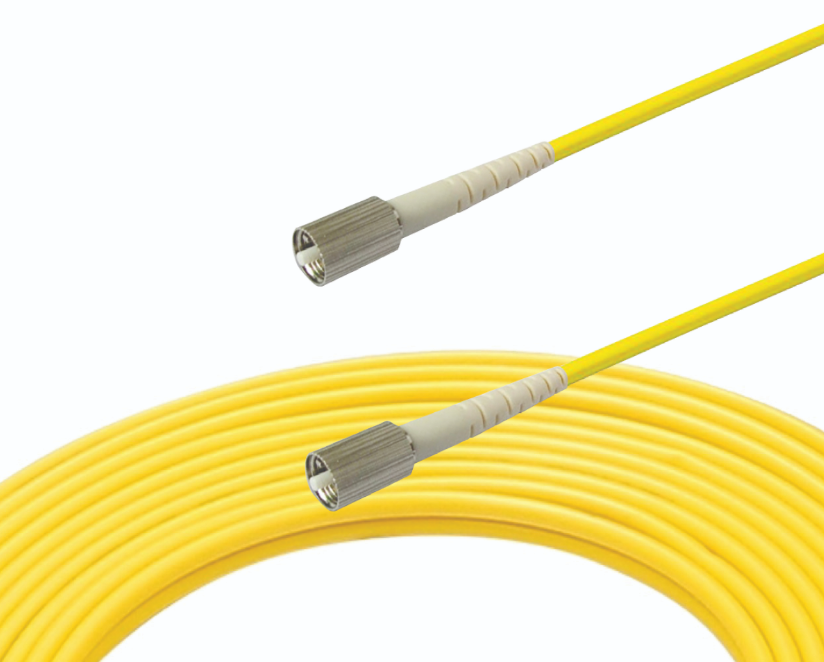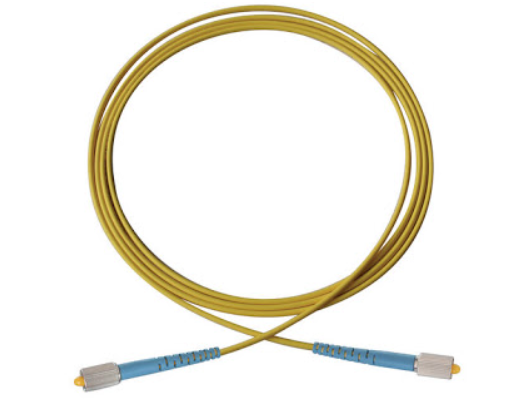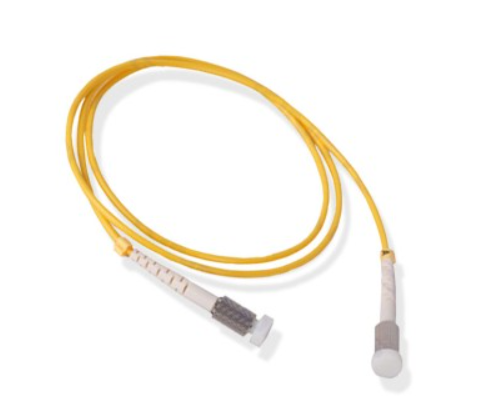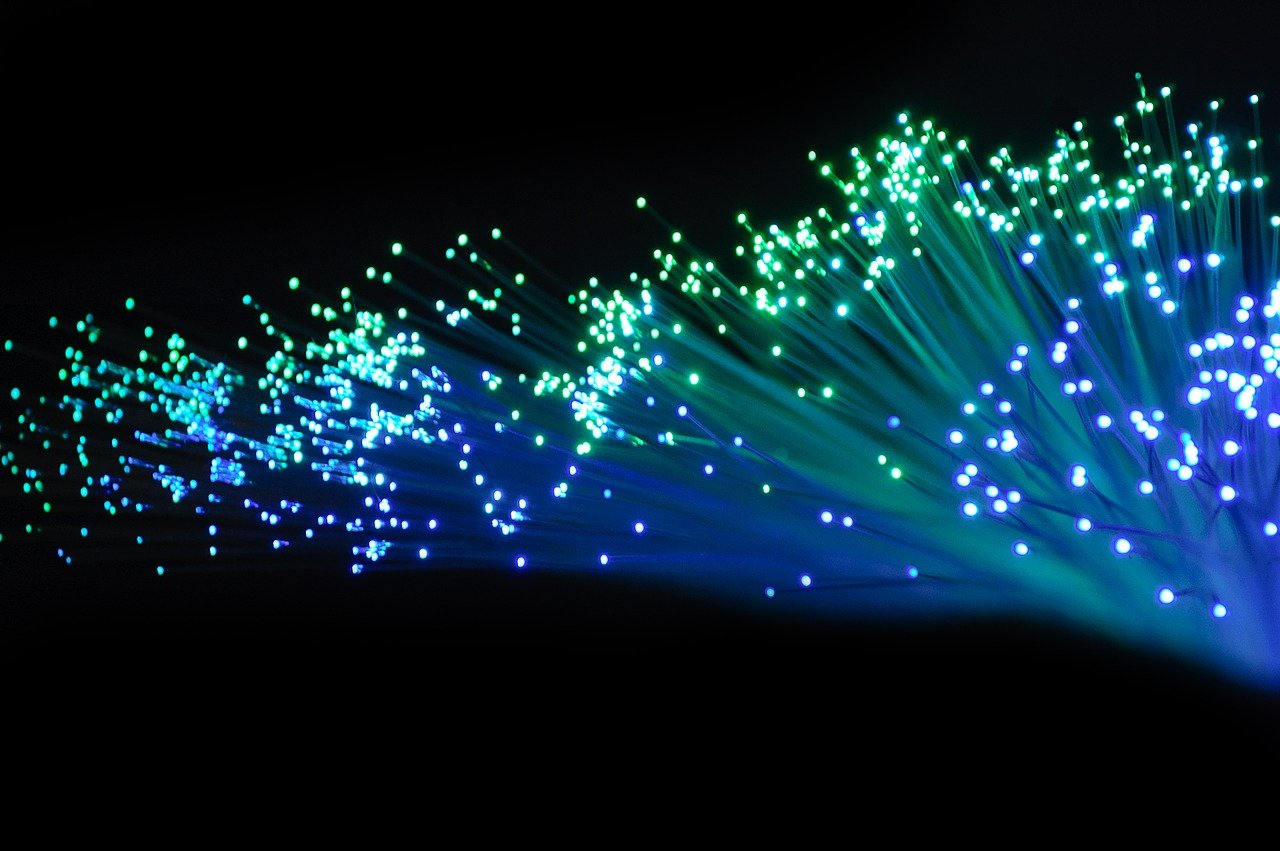The Future of Rodent Proof Fiber Optic Technology: Advancements and Trends

Rodent-Proof Fiber Optic Technology: An Overview
In today's interconnected world, the reliability and security of fiber optic networks are paramount. One critical aspect that often goes unnoticed is the vulnerability of these networks to rodent damage. Rodents, with their incessant chewing and gnawing behavior, can cause significant disruptions and costly repairs. That's where rodent-proof fiber optic technology comes into play.
By incorporating innovative design elements and materials, rodent-proof patch cords provide a robust defense against these pesky intruders. One such example is the Singlemode Fiber Optic Patch Cord with D4 Connector. This cutting-edge patch cord offers exceptional performance and durability, ensuring uninterrupted data transmission.
As we delve deeper into this blog, we will explore the advancements and trends in rodent-proof fiber optic technology. We will also shed light on the detrimental effects of rodent damage on fiber optic networks, underscoring the importance of investing in rodent-proof patch cords. Let's dive in to discover how this technology safeguards our networks from potential threats.
Safeguarding Fiber Optic Networks from Rodent Damage
Understanding the Threat: Rodent Damage to Fiber Optic Networks
Rodents, such as mice and rats, may seem harmless at first glance, but they pose a significant threat to fiber optic networks. Their natural instinct to chew and gnaw on objects can wreak havoc on delicate fiber optic cables. When rodents come into contact with these cables, they see them as an enticing snack or nesting material.
The consequences of rodent damage to fiber optic networks can be severe. Network downtime can occur, disrupting communication channels and causing inconvenience for businesses and individuals alike. Moreover, data loss is another potential outcome of rodent infestation in these networks. The compromised integrity of the cables can lead to signal disruptions and transmission errors.
To maintain the reliability and functionality of fiber optic networks, preventing rodent damage is crucial. This is where rodent-proof patch cords play a vital role. These specialized patch cords are designed with materials and techniques that deter rodents from chewing through the cable. By investing in rodent-proof patch cords, network administrators can effectively safeguard their infrastructure against potential threats.
The Importance of Rodent-Proof Patch Cords
Rodent-proof patch cords offer a proactive solution for mitigating the risk of rodent damage in fiber optic networks. These cords are constructed using robust materials that are resistant to rodent chewing. Specialized coatings or reinforcements are applied to create a barrier that discourages rodents from gnawing through the cable.
By incorporating these innovative features, rodent-proof patch cords enhance network security by minimizing the risk of downtime caused by rodent-inflicted damage. They provide peace of mind for network administrators who can rest assured knowing that their infrastructure is protected against potential disruptions.
Investing in high-quality rodent-proof patch cords not only safeguards against physical damage but also helps prevent financial losses associated with repairs and downtime. By taking this proactive approach, organizations can ensure the integrity and reliability of their fiber optic networks, allowing for seamless communication and uninterrupted data transmission.
Innovations in Rodent-Proof Patch Cords
Features and Benefits of Singlemode Fiber Optic Patch Cord with D4 Connector
The Singlemode Fiber Optic Patch Cord with D4 Connector is a remarkable innovation in rodent-proof patch cord technology. This high-performance patch cord offers a multitude of features and benefits that contribute to the overall reliability and efficiency of fiber optic networks.
Designed to meet the highest industry standards for optical transmission and reliability, the Singlemode Fiber Optic Patch Cord with D4 Connector ensures superior performance. Its advanced construction and precision engineering minimize signal loss, allowing for seamless data transmission over long distances. This translates to improved network efficiency and reduced latency, enhancing overall network performance.
One of the key advantages of the D4 Connector is its ability to provide a secure and stable connection. The connector's design prevents accidental disconnections, ensuring uninterrupted communication channels. By minimizing signal disruptions, it maximizes network uptime and reduces the risk of data loss or transmission errors.
In addition to its technical prowess, the Singlemode Fiber Optic Patch Cord with D4 Connector offers exceptional durability. It is constructed using robust materials that are resistant to rodent chewing and other physical damage. This makes it an ideal choice for environments prone to rodent infestation or other challenging conditions.
Comparing Rodent-Proofing Techniques
Various rodent-proofing techniques are employed in the manufacturing of patch cords to enhance their resistance against rodent damage. Specialized coatings and reinforced materials are commonly used to create barriers that deter rodents from chewing through the cable.
These techniques vary in their effectiveness based on factors such as environmental conditions, rodent activity levels, and specific network requirements. Understanding these different techniques can help network administrators select the most suitable rodent-proof patch cord for their infrastructure.
Case studies have demonstrated the efficacy of these rodent-proofing techniques in preventing damage and ensuring network integrity. By investing in high-quality patch cords that incorporate these innovative techniques, organizations can significantly reduce the risk of rodent-related disruptions and costly repairs.

Choosing and Installing Resilient Patch Cords
Tips for Selecting the Right Rodent-Proof Patch Cord
When it comes to choosing rodent-proof patch cords, several factors should be taken into consideration to ensure optimal performance and protection against rodent damage. Here are some essential tips to help you select the right patch cord for your specific needs:
Consider the specific environmental conditions and rodent activity in the installation area. Different regions may have varying levels of rodent infestation, so it's crucial to choose a patch cord that can withstand the local rodent population.
Ensure that the patch cord meets industry standards and certifications for rodent-proofing. Look for products that have undergone rigorous testing and certification processes to ensure their effectiveness in deterring rodents.
Consult with fiber optic technicians or network administrators for expert advice on selecting the most suitable patch cord. These professionals have firsthand experience dealing with rodent-related issues and can provide valuable insights based on their expertise.
By following these tips, you can make an informed decision when choosing a rodent-proof patch cord that best suits your network requirements, ensuring maximum protection against potential damage.
Installation and Maintenance Considerations
Selecting a resilient patch cord is just one part of protecting your fiber optic network from rodents. Proper installation techniques and regular maintenance procedures are equally important in enhancing rodent resistance. Here are some considerations to keep in mind:
Implement secure cable management practices during installation to minimize exposure of the patch cords to rodents. This includes routing cables away from areas where rodents are likely to access them, such as crawl spaces or utility conduits.
Seal entry points and gaps in walls or floors where rodents could potentially enter and reach the cables. Using sealants or other barriers can help prevent rodents from gaining access to vulnerable areas.
Regularly inspect your network infrastructure for any signs of potential rodent damage, such as chewed cables or droppings. Promptly address any issues to prevent further damage and ensure the continued integrity of your network.
Collaborate with pest control professionals to implement effective rodent prevention strategies. They can provide guidance on identifying and addressing rodent infestations, as well as recommend additional measures to enhance rodent resistance in your network infrastructure.
By taking these installation and maintenance considerations into account, you can further fortify your network against rodent-related threats and minimize the risk of disruptions caused by rodent damage.
The Future of Rodent-Proof Fiber Optic Technology
Emerging Trends and Advancements
The field of rodent-proof fiber optic technology is continuously evolving, with ongoing research and development focused on enhancing the durability and rodent resistance of patch cords. Advancements in materials, coatings, and manufacturing techniques are expected to further improve the capabilities of rodent-proofing.
Researchers are exploring new materials that offer increased resistance to rodent chewing while maintaining optimal optical performance. These advancements aim to create patch cords that can withstand even the most determined rodents, ensuring uninterrupted fiber optic communication.
In addition to material innovations, the integration of smart technologies and sensors holds great potential for the future of rodent-proof fiber optic technology. Real-time monitoring systems could be developed to detect early signs of rodent activity near cables, allowing for prompt preventive measures. This proactive approach would minimize the risk of damage before it occurs, enhancing network security and reliability.
Implications for Fiber Optic Technicians and Network Administrators
Fiber optic technicians and network administrators play a crucial role in ensuring the integrity and functionality of fiber optic networks. Staying updated on the latest advancements in rodent-proof fiber optic technology is essential for making informed decisions regarding network infrastructure and maintenance.
Understanding emerging trends allows technicians and administrators to anticipate future challenges related to rodent damage prevention. By collaborating with manufacturers and industry experts, they can gain valuable insights into implementing cutting-edge rodent-proofing solutions tailored to their specific needs.
Moreover, being aware of future advancements enables technicians and administrators to plan ahead when designing or upgrading network infrastructure. They can incorporate features that align with upcoming developments in rodent-proof technology, ensuring long-term protection against potential threats.
By embracing these advancements in rodent-proof fiber optic technology, technicians and administrators can enhance network security, reduce downtime risks caused by rodents, and maintain reliable communication channels for businesses and individuals alike.

Embracing Rodent-Proof Fiber Optic Technology
Rodent-proof fiber optic technology plays a vital role in ensuring network security and minimizing the risk of rodent damage. By investing in high-quality rodent-proof patch cords and implementing preventive measures, such as secure cable management and regular inspections, fiber optic networks can be safeguarded against potential disruptions.
The importance of network security cannot be overstated. Rodents pose a significant threat to the integrity and reliability of fiber optic networks, which are crucial for seamless communication and data transmission. By embracing rodent-proof fiber optic technology, organizations can protect their networks from costly repairs, data loss, and network downtime.
Staying informed about the advancements and trends in this technology is essential for fiber optic technicians and network administrators. It enables them to make informed decisions when selecting patch cords, implementing preventive measures, and planning future network infrastructure upgrades. By prioritizing network security and data protection through rodent-proofing solutions, they can ensure the longevity and integrity of their networks.
See Also
Innovative Trends in Wall Mount Solutions for Fiber Optic Patch Panels
FC/UPC vs FC/APC: The Ongoing Battle of Fiber Optic Patch Cord Connectors
The Significance of LSZH Fiber Optic Patch Cords in Ensuring Safety and Sustainability
Switchable Uniboot Patch Cords: Revolutionizing Fiber Optic Connectivity


